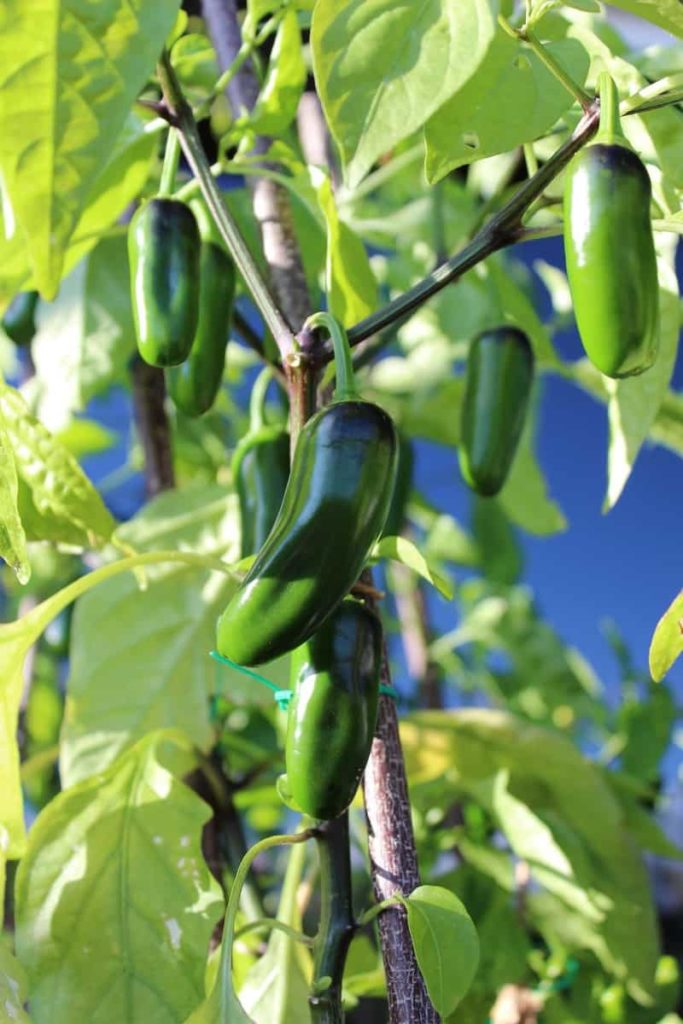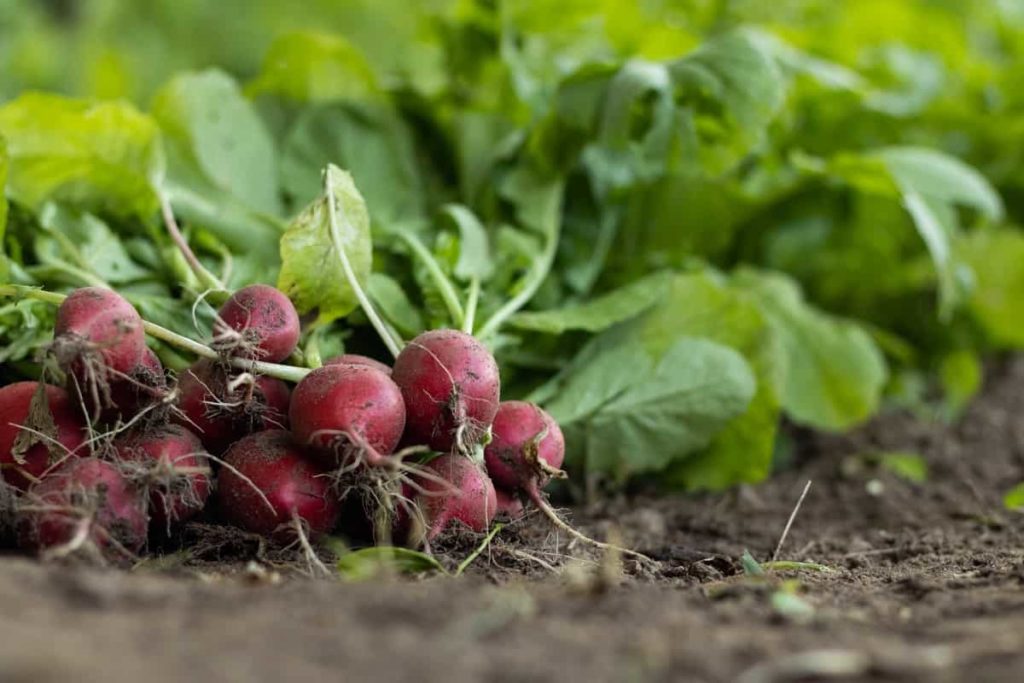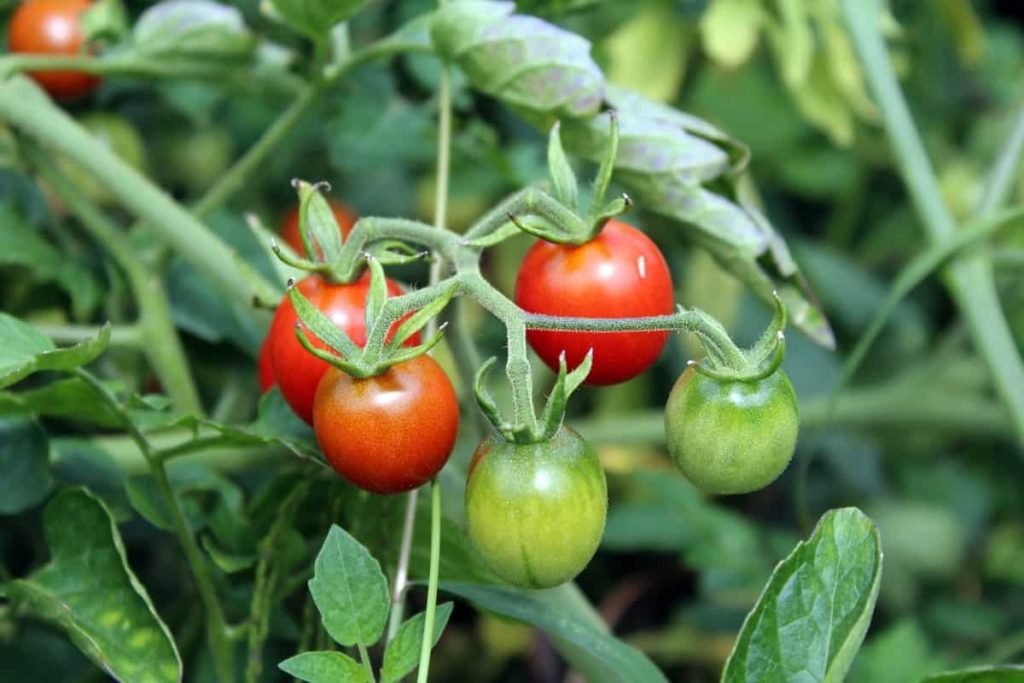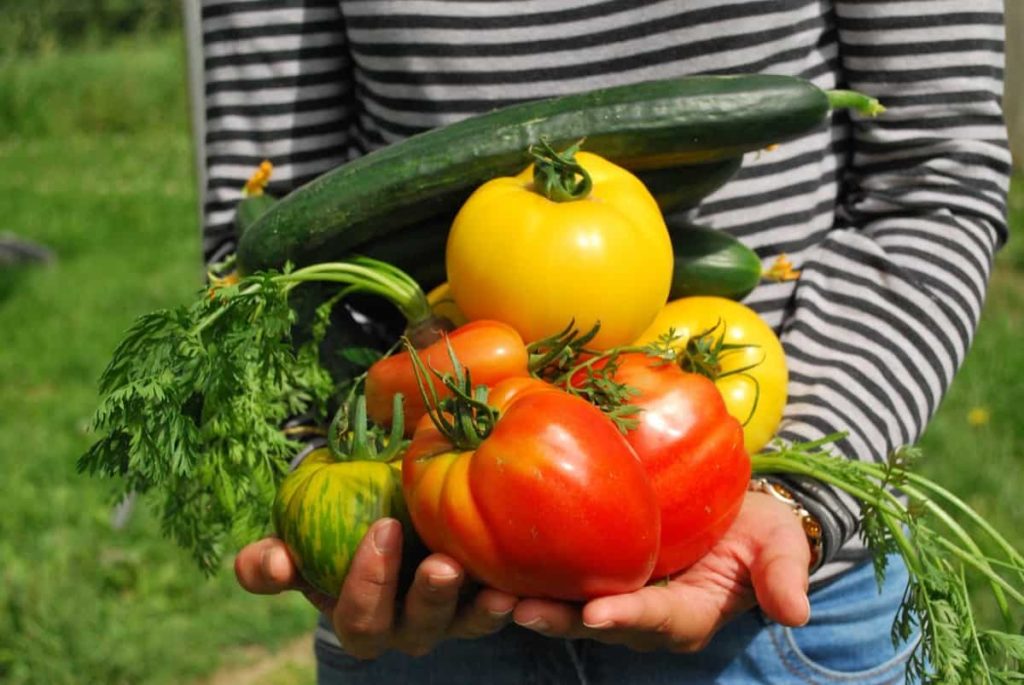The delight of maintaining a home garden is unparalleled. Being among plants has been demonstrated to affect people’s health and happiness positively. It’s also becoming more common in India’s most populous cities. Pondicherry is one such city with a growing scale of home gardens. Home gardening is among the most rewarding pastimes available, yet few people engage in it.

Many see it as a means to reduce their carbon footprint, keep themselves healthy, save money on groceries by growing their own at home, and connect with their communities. Below we will see home gardening in Pondicherry, how to set up a home garden in Pondicherry, the different types of home gardens in Pondicherry, how to set up a backyard home garden in Pondicherry, how to set up a terrace home garden in Pondicherry, how to set up a balcony container home garden in Pondicherry, and the different vegetables, fruits, flowers and herbs for Pondicherry home gardens.
Home gardening in Pondicherry
Choose the type of home garden
Backyard gardening/outdoor gardening
Select a perfect location for your backyard home garden
Pick a location in your backyard to start your garden. Choosing a spot that receives enough full light for the plants you want to cultivate is essential since most need long sun exposure each day to thrive. The sun’s beams are at their brightest and strongest between 10 a.m. and 4 p.m. Most vegetable plants require eight hours of daily sunlight to flourish. However, some plants need less direct sunlight.
The minimum daily sunlight requirement for fruiting plants is eight hours. Root veggies need at least six hours of sunlight every day. Green plants, or those with leafy components, need at least four hours of daylight every day. Find a site that is a far distance from any trees you can see. Don’t place shade-loving plants directly under a tree. If trees are present, they will use all the water and nutrients in the soil, leaving nothing for the garden plants to use.
A reliable source of water must be available to sustain your plants. It is essential to consider the location of the closest exterior water tap, from which a hose must be extended. Plant growth will be easier on a flat surface as well. Since the soil slows, water applied to the land or falls on the ground will flow downhill. In addition, locate the garden next to an existing structure/building since this will enable the structure to serve as a windbreak.
Testing and preparing your soil for your backyard garden
You can learn a lot by having a soil test done. Testing the soil is necessary before putting it in a garden. You will learn not just the relative amounts of different soil components like clay, sand, silt, and organic matter in your garden but also if the pH level is off and whether there are any nutrient deficiencies. Inquire about testing for lead and arsenic, two harmful substances that could be present in the soil in minute quantities.
If the quantities of toxins are excessive, you should not use the soil to grow plants. You can prevent this by growing your plants on raised beds with a bottom barrier. Eliminating pre-existing vegetation is the first step in preparing a space for a garden. Weeds can be pulled by hand, but eliminating them is crucial, including their roots. Renting a gas-powered sod cutter might help you have a clean start if you renovate an existing lawn. After that, you’ll have to get your house in order.
You may want to use a mechanical rototiller to prepare the ground for planting, but we recommend only tilling for now. Because of the risk of upsetting the soil’s ecosystem (including worms, beetles, and other organisms), it’s not the best tool for tilling the ground. Once the ground has been levelled, the next step is to use your plan to draw in the boundaries of your garden beds and the paths that will go between them. To keep the soil from compacting, you should avoid walking on your beds.
In case you missed it: 18 Common Rose Plant Problems: How to Fix Them, Solutions, and Treatment

Beds should have the top foot of soil worked over, and a lot of compost added. To eliminate weeds and grass without damaging the soil’s structure, you can cover it with cardboard and compost. Nutrients like nitrogen, phosphorus, potassium, and even micronutrients can be found in compost and added to the soil. Soil water retention will also be improved. The organic soil sold in bulk or bags at gardening centers in Pondicherry can be used to raise your garden beds to the desired level.
Water your backyard home garden
Plants should be watered in the morning, preferably around noon. This means that the foliage can dry up before evening, limiting the spread of diseases and that no water is lost due to evaporation. Fungal diseases may form in as little as two to four hours in warm, wet environments and thrive at temperatures between seventy and eighty degrees. You should water deeply once in a while. It is best to water just when the soil is moist to the point where the bottom of a shovel is showing.
The water loss due to runoff is a further consequence of this issue. The roots of your plants will benefit more from irrigation if you construct huge watering troughs. A drip watering system, which applies water to the soil slowly and consistently, can help reduce water waste. When employing sprinklers to provide a spray to a plant, there is a risk of water loss due to runoff and evaporation outside of the intended spray area.
Drip watering systems make consistent and steady water delivery at the plant’s location possible, allowing maximum water penetration to the root zone. Most plants that need watering should utilize cartridge-style filters, which are quite inexpensive since emitters or drip holes often get blocked with tiny particles or salts in the water supply. Depending on soil density, you can reach the following depths with the same volume of irrigation water: Nine inches or more in sandy soil, twelve inches or more in loamy soil, and no more than three inches in clay soil.
The normal depth at which a plant’s root zone extends is between 2 and 12 inches; however, the roots of larger plants, like tomatoes, can go as deep as 3 feet. Since clay soil is so dense, it can absorb water effectively from a small quantity of water supplied once or twice daily for up to three days. Too much water can be fatal to plants. Use stepping stones and mulch or straw to create pathways. Never walk on the beds in a garden. Suppose you want clean leaves and good plant health; water the plant weekly from above.
Manage pests and diseases in your backyard home garden
Consider how much harm your veggies can tolerate before using pesticides. Some gardeners can’t stand to see so much as a bug or imperfection on a leaf, and others make it a practice to grow more to compensate for the unavoidable losses. If the problem persists, more drastic measures, such as the targeted use of pesticides, may be required.
Use these preventative measures instead of jumping to the “one spray kills all” solution, which might have unintended consequences such as wiping out good bugs and microbes in the soil along with the bad ones. Make sure you do this. If you have to use pesticides, choose one of the safer options below. These pesticides are safe for humans and other animals since they are not toxic to most species. Check the labels to verify whether the product is safe for your plant or insect infestation.
In case you missed it: Growing Peppers from Seed to Harvest: For Bell Peppers, Chilli Peppers, Spicy/Hot Peppers, Sweet Peppers, and Jalapeno Peppers

You can use insecticidal soaps against aphids, whiteflies, and mites, commonly known as potassium salts of fatty acids. These cleaners can be found in spray bottles, making them convenient for quick cleanups. An insecticidal soap effectively requires a thorough coating of the infected area, and a second application is typically necessary. Insecticidal oils can eliminate various pests, including scale insects, spider mites, aphids, whiteflies, mealybugs, lace bugs, psyllids, and thrips.
Balcony home gardening/container gardening/indoor gardening
Choose perfect balcony pots
Unsurprisingly, selecting an appropriate container is essential for successful balcony container gardening. Choosing the best balcony container for your garden depends on several factors. The area available is the first thing to consider when planning a balcony container garden. The selection of plants for your balcony container garden is essential. Since plants have various space requirements on your balcony, choosing an appropriate container size is crucial.
Use quality potting mix for your balcony pots
Quality potting soil is required for plant growth. Do not use soil from your backyard since it will compress and restrict water drainage. Furthermore, planting in balcony pots eliminates the need to deal with weeds and soil-borne diseases. You can use soil from your garden, but you risk introducing new problems to your pots.
Plant your balcony home garden
Most people believe planting their balcony container garden to be the easiest part of the process. You’ll need pots, potting soil, fertilizer, and seedlings to start planting. Pay great attention to and strictly follow any instructions on the seed packs while growing plants. On the back of the seed, the package is instructions on how deep to plant, how many seeds to use, and how far to space them. You should examine the condition of each plant at the nursery before buying any more.
Watch for wilting leaves and other tell-tale indications. Check out the soil and roots in the little pot from the nursery. White, well-developed roots and moist soil are perfect conditions. Before planting seedlings in balcony pots, it’s essential to carefully separate them from their nursery pots and carefully remove the roots. Spreading the plant’s roots and making transplants easier will benefit from this.
To find out when you should plant your seeds, read the box. Plants like beans and squash thrive in the open air. It is no use to grow them inside since they germinate and expand too rapidly. For example, poppy seeds thrive best when put on the ground outdoors. Direct sow seeds are often seen in stores. Seeds require warm soil to germinate. Germination rates are reduced or non-existent in soils that are too cold.
Most seeds germinate at 78 degrees Fahrenheit. Waterproof heating mats designed for seed germination keep the soil at a constant temperature. They can be found at most garden centers and nursery shops. Alternately, you can germinate the seeds by placing the seed trays on a warm surface. The ambient air temperature should be kept at or below 70 degrees Fahrenheit immediately after germination.
Seedlings can withstand 50°F as long as the soil is between 65 and 70°F. Pick out a serving that’s between three and six inches in length. Use a sharp razor blade to make an even cut. The shoot’s ability to send out new roots will be limited if the item is damaged. Cut ends of cuttings should be kept in water or a plastic bag with a damp cloth until planting. Remove the lower leaves from a sprout before planting them in the soil.
In case you missed it: Homemade Fertilizers for Root Vegetables: Potatoes, Carrots, Beetroot, Onions, Radishes, Turnip, Ginger, and Garlic

Then, you only need to apply rooting hormone to the very tip of your stem. This aids in the germination process. Rapidly prepare a container with wet potting mix, perlite, or vermiculite for your cutting. Protect your cutting board from the elements by wrapping it in plastic. Some plants have weak stems and can be easily planted in a jar or glass of water.
Water your balcony home garden
In the sweltering heat of summer, container plantings need continuous watering. Being above ground and without direct soil, contact makes it extremely important to keep the soil moist in pots. When the soil begins to separate from the edges of the balcony container, you know it’s time to water your plants. If your pots don’t have drainage holes, you might suffocate your plants’ roots and kill them.
As a rule of thumb, water plants by pushing your fingertip into the soil. If the soil is dry when you examine it, you may need to water your potting mix. If the soil is wet when you check it, you may have overwatered it. Your plants won’t need daily watering once you figure out how much they need.
Fertilize your balcony home garden
You’ll need to supplement your potting soil with fertilizer if you want your plants to flourish all year long. One of the advantages of producing your food is that you can manage the quality and quantity of the chemicals used in your harvest, even if conventional fertilizers are readily available. If you’re looking for fertilizer, it’s best to visit a local nursery in search of an organic option you know is safe for your plants and your health.
Many various types of fertilizer exist, but in general, it’s recommended that you follow the instructions included with your slow-release organic fertilizer to add it to your potting soil. Then, fertilize your plants roughly every two weeks after they’ve been set up to ensure they have enough food and water to grow strong and healthy all season long.
Terrace gardening
Plan your terrace home garden
Consider the amount of sunlight and shadow each plant will get before determining where to place it. Plant pots need to be placed near a reliable source of water. Different plants thrive under different lighting conditions. It is important to periodically re-evaluate the plant’s location while it is being used.
In case you missed it: Growing Roma Tomatoes In Pots – From Seeds At Home

Waterproofing your terrace
The first step in building a terrace garden is always to waterproof it. The terrace surface must be treated with a water-resistant coating to prevent damage to the building. As time passes, the surface’s deterioration might become much more severe. Waterproofing a concrete slab or surface is as easy as applying a polymer coating. Terrace gardening can begin once the polymer has been applied.
Ensure drainage on your terrace
The soil must be porous and not wet to do this. By letting the water evaporate, the insulating layer can be protected from harm caused by condensation. Soil and other organic debris can cause drains to get clogged, but a geotextile filter can keep them from draining away. Container gardening is simple; remove any excess water after planting. There should be a water supply close to the terrace since plants in pots need a lot of water. A trellis is a way to go if you want to grow various climbing plants.
Select the perfect potting mix for your terrace garden
For optimal plant growth, combine soil and compost during potting. Standard potting soil can be used for container gardening, but special care must be taken to avoid over- or under-watering and compaction. Plants require wet, porous soil that allows air movement. This soil type is ideal because of its moderate consistency.
Soil should remove excess water but retain just enough to promote healthy root development. The proper levels of nutrients are essential for developing all plant life. A soil-less mixer can be made from various materials, including coco peat, perlite, peat moss, vermiculites, and pumice stone. The needs of the plant define the kind of material utilized. When in doubt, a simple all-purpose mix will do.
Water your terrace garden
One must consider each plant’s specific needs to garden properly. Drip watering methods aid in Pondicherry regions with limited precipitation or drying winds. Evaporation is a concern for potted plants. It is simpler to maintain humidity levels in a collection of pots. The standard recommendation for watering fast-draining soil during the summer is 10-20 liters per square meter.
Fertilize your terrace garden
Plant health relies on having access to sufficient nutrients. Plants need more of the essential soil components than they can make themselves. Potassium, phosphorus, and nitrogen are necessary to plant nutrients. Examples of organic fertilizers created from living animals include bone meal, horde meal, neem cake, and Pongamia cake.
Inorganic fertilizers are effective quickly and are less likely to damage plant life if administered improperly. A plant’s roots need phosphorus to flourish. Nitrate is vital to plant development and yields greener, healthier leaves. Potassium supplements improve health and crop yields.
Protect your terrace home garden
A robust and healthy plant population protects against pests and diseases. They will flourish if you give the plants enough time outside, food, water, and humidity. For effective pest management, it is essential to identify the pests that need to be dealt with. Common pests include mealybugs, scavenger ants, mites, fungus gnats, scales, aphids, and whiteflies.
Your garden can be in danger from the high winds in Pondicherry. Your plant might be entirely ruined if high-pressure winds blow across the area. If you can, you may protect your garden from the elements by building a fence or a windbreak. To prevent congestion, it is essential to ensure enough space in the park before erecting windbreaks.
Best vegetables for Pondicherry home gardens
Radishes, chilies, lettuce, tomatoes, cucumbers, beans, brinjal, lady’s fingers, potatoes, carrots, spinach, bitter gourd, bottle gourd, and capsicum are among many vegetables that can be grown in Pondicherry home gardens.
In case you missed it: 21 Common Potato Plant Problems: How to Fix Them, Solutions, and Treatment

Best fruits for Pondicherry home gardens
Bananas, watermelons, muskmelons, guava, peaches, figs, lemons, oranges, grapes, papaya, pomegranates, gooseberries, and pineapples are some fruits that can be grown in Pondicherry home gardens.
Best flowers for Pondicherry home gardens
Roses, marigolds, jasmines, lilies, hibiscus, chrysanthemums, sunflowers, dahlia, petunias, and impatiens are among the many flowers that can be grown in Pondicherry home gardens.
Best herbs for Pondicherry home gardens
Ginger, cilantro, mint, curry leaves, fennel, basil, coriander, dill, and chives are among the many herbs that can be grown in Pondicherry home gardens.
Conclusion
There is no method in Pondicherry other than growing plants in your backyard home garden that is more effective than this for producing edible plants. In your garden, you should grow not only edible plants but also aesthetic plants. It’s smart to use eye-catching plants to spruce up your outside space, whether it’s a backyard or a terrace garden.
- How to Grow Tomatoes Organically at Home: A Comprehensive Guide
- Organic Gardening on a Budget: Low-Cost Methods and Materials
- Gongura Seed Germination and Planting Methods
- Cabbage Seed Germination and Selection
- Broccoli Seed Germination and Selection
- Asparagus Seed Germination and Variety Selection
- Seasonal Flower Gardening: Best Practices for Spring, Summer, Fall, and Winter
- How to Grow Hibiscus from Flower
- Plantation Ideas for Home Decoration: A Beginners Guide
- Flower Garden Designs and Layouts for Beginners
- Planting and Spacing Techniques in Papaya: A Beginner’s Guide
- Growing Gold: Essential Techniques for Planting Pineapples
- How to Make Kalanchoe Plant Bushy: Home Remedies and Solutions
- 11 Reasons Why Your Gardenia is Not Blooming: Home Remedies and Solutions
- Eco Elegance: The Guide to Designing a Drought-Tolerant Landscape
- Gardening on a Slope: Strategies for Hillside Landscaping
- Nourish and Flourish: Top Organic Mulches for Thriving House Plants
- Everything You Want to Know about Indian Mogra Flower: Discover Uses and Growing
- Green Thumb Success: Expert Tips for Cultivating Greenhouse Pumpkins All Year Round
- Maximize Growth & Flavor: The Ultimate Guide to Companion Planting in Herb Gardens
- How to Control Rhododendron Problems Naturally: Home Remedies and Organic Ways to Fix Them
- Natural Magic: The Remarkable Benefits of Cinnamon for Plants
- Best Steps to Revive Dying Tulip with Natural and Organic Treatment
- 10 Reasons Why Your Angel Trumpet is Not Blooming: Remedies and Treatment
- How to Fix Periwinkle Leaf and Flower-Related Problems: Natural Remedies and Solutions
- How to Fix Zinnias Leaf and Flower Problems: Discover Natural and Home Remedies
- Organic Steps to Induce Lemon Tree Flowers: A Comprehensive Guide
- Bloom Booster: Crafting the Perfect Homemade Bougainvillea Fertilizer
- Optimizing Growth: A Guide to Applying NPK Fertilizer for Potted Plants
- 10 Best Homemade Fertilizers for Rubber Plant: DIY Recipes and Application Method
- How to Boost Female Pumpkin Flowers: Effective Steps for More Flowers and High Yields
- Transform Your Indoor Garden: Top Benefits of Pink Salt for Houseplants
- 10 Best Homemade Fertilizers for Peacock Plants (Calathea): Easy DIY Guide
- Unlock Blooms: 9 Reasons Why Your Potted Chrysanthemum is Not Blooming
- 8 Reasons Why Your Potted Hibiscus is Not Blooming: Fix it with Simple Solutions
- Unlock Blooms: 9 Key Reasons Your Potted Frangipani Won’t Flower